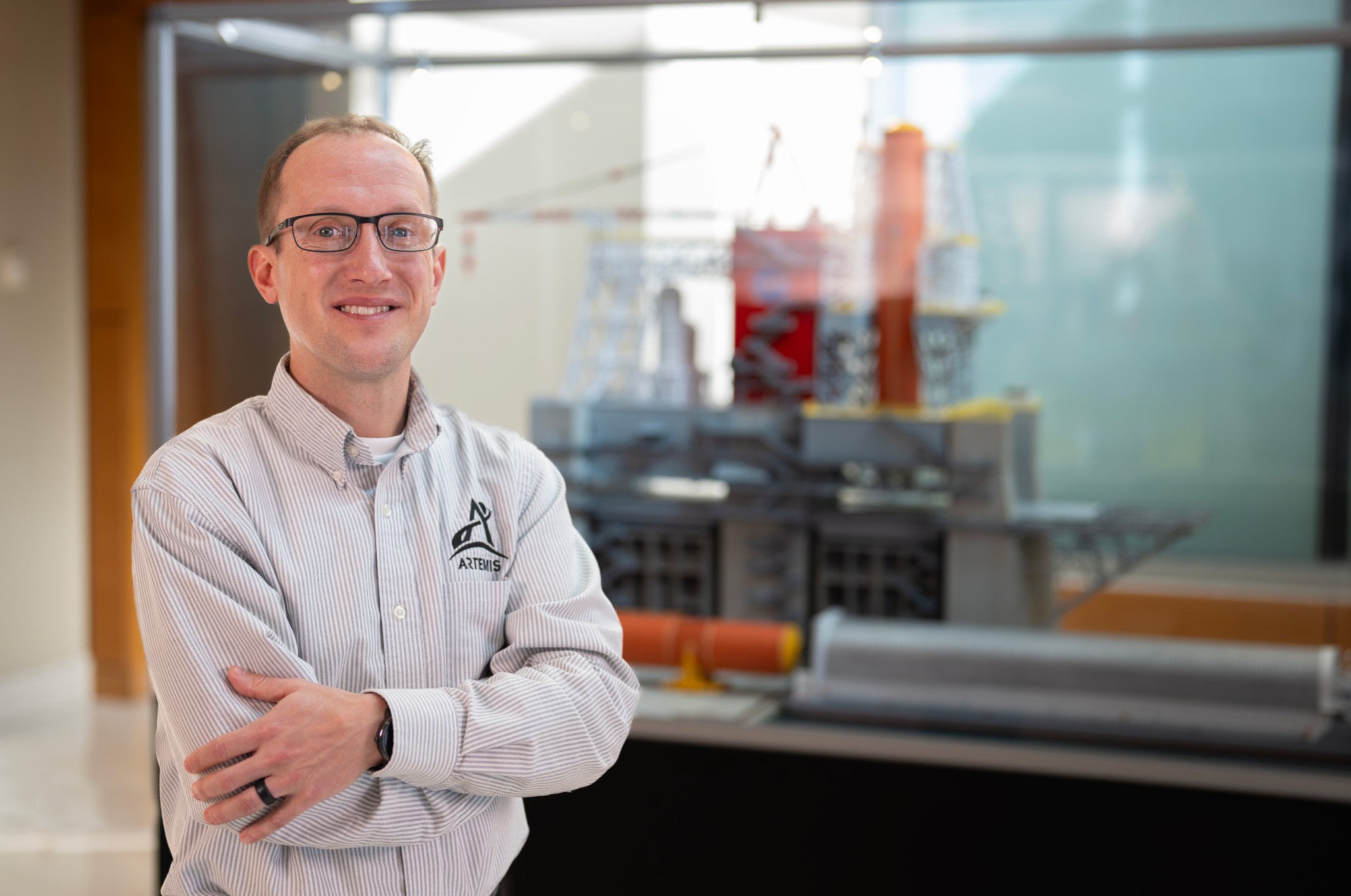
Launching a rocket to the Moon takes perseverance and diligence. Josh Whitehead – a world-class engineer, race-winning long-distance runner, and father – knows that it also takes a good attitude.
“Positive energies are vital, particularly when working through challenges,” Whitehead says. “Challenges are opportunities to learn and grow. There’s always more than one way; always more than one solution.”
Whitehead’s job as the associate manager for the Stages Office of NASA’s SLS (Space Launch System) rocket supports design, development, certification, and operation of the 212-foot-tall SLS core stage. The massive core stage with two propellant tanks that collectively hold more than 733,000 gallons of super-cold propellant is one of the largest cryogenic propulsion rocket stages.
Whitehead joined the SLS Program, based at NASA’s Marshall Space Flight Center in Huntsville, Alabama, early on during the COVID-19 pandemic. Complicating matters further, in June 2020, Whitehead was injured in a hit-and-run cycling accident so devastating that it separated his right shoulder and broke his back in three places.
Amid his necessary rehabilitation and surgeries, Whitehead learned to type left-handed and one-handed. Through it all, he was working to further the agency’s Artemis campaign and preparing for the first launch of the SLS rocket for Artemis I.
Now back to running and having participated in a local charity race every year since 2007, the avid runner and engineer will tell you that, like a recovery, the road to launch is not a sprint. It’s a cadenced effort as teams across the country worked toward a common goal. During his rehabilitation and path to run again, Whitehead and his team finished assembling the first SLS core stage and the successful eight-part Green Run test campaign of the entire stage at NASA’s Stennis Space Center in Bay St. Louis, Mississippi, prior to the Nov. 16, 2022, Artemis I launch.
Whitehead and his team are now manufacturing and processing core stages for multiple Artemis missions, including Artemis II in 2025, the first crewed flight under Artemis that will test the life-supporting systems in the Orion spacecraft ahead of future lunar missions.
Whitehead holds multiple advanced degrees in engineering from Auburn University and the University of Alabama in Huntsville. He got his start in the aerospace industry conducting subscale motor manufacturing tests for NASA’s Space Shuttle Program. From systems engineering supporting NASA’s Constellation Program and verifying and validating the solid rocket booster element in the SLS Program’s early days, to qualification activities and safety and mission assurance for the Artemis I flight, Whitehead has a passion for cross-discipline work.
“Being able to work systems engineering activities and multiple elements is all complementary. But the common thread is it’s about the people, the process, and the product,” he said.
SLS is part of NASA’s backbone for deep space exploration, along with the Orion spacecraft, advanced spacesuits and rovers, the Gateway in orbit around the Moon, and commercial human landing systems. SLS is the only rocket that can send Orion, astronauts, and supplies to the Moon in a single launch.




























